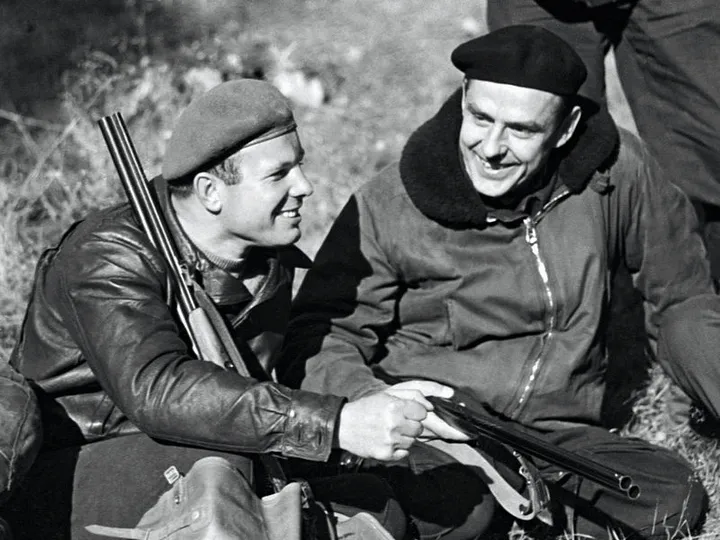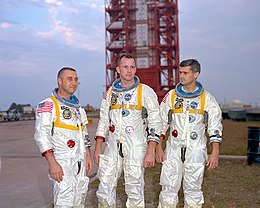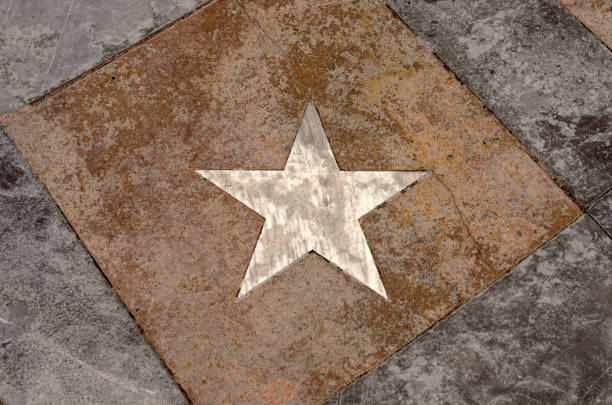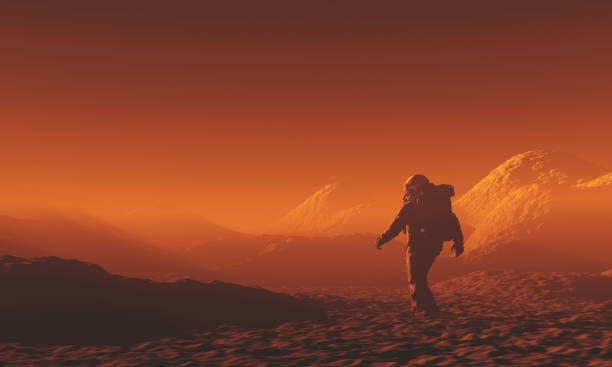The exploration of space is a dangerous endeavor. Astronauts face many risks, including exposure to radiation, the dangers of microgravity, and the possibility of accidents. Despite these risks, many brave men and women have dedicated their lives to exploring space. Unfortunately, there have been a number of astronauts who have died in space. These tragic events have had a profound impact on the space program, but they have also inspired others to follow in their footsteps and continue exploring space.
The First Astronaut to Die in Space

On April 24, 1967, Soviet cosmonaut Vladimir Komarov became the first person to die in space when his spacecraft, Soyuz 1, malfunctioned during re-entry and crashed. Komarov, a decorated pilot and air force engineer, was selected as the sole cosmonaut for the Soyuz 1 mission, which was intended to test the spacecraft’s capabilities for future crewed missions.
The Soyuz 1 launch was initially successful, and Komarov completed a series of orbits around Earth. However, during re-entry, the spacecraft’s parachute system failed to deploy properly. The backup parachute also malfunctioned, and the Soyuz 1 capsule crashed into the ground at high speed. Komarov was killed instantly.
Komarov’s death was a major setback for the Soviet space program, but it also led to increased safety measures and oversight. The Soyuz program was temporarily halted while an investigation was conducted into the cause of the accident. The investigation found that a design flaw in the parachute system was responsible for the malfunction.
The Soyuz program was eventually resumed with modifications to the parachute system and other safety measures. The Soyuz spacecraft has since become a workhorse of the Russian space program, carrying cosmonauts to and from the International Space Station.
ALSOE READ: Death in the Cosmos: What Happens When Someone Dies in Space?
The Apollo 1 Fire

in front of the launch pad containing
their AS-204 space vehicle
On January 27, 1967, tragedy struck the American space program when a fire erupted inside the Apollo 1 command module during a launch rehearsal test at Cape Canaveral, Florida. Astronauts Virgil “Gus” Grissom, Edward White, and Roger Chaffee were unable to escape the capsule and perished in the blaze.
The fire, which lasted about 20 seconds, was caused by an electrical spark that ignited the pure oxygen atmosphere inside the capsule. The intense heat and flames quickly engulfed the interior, trapping the astronauts and preventing them from opening the inward-opening hatch against the pressure differential.
In the aftermath of the Apollo 1 fire, NASA conducted a thorough investigation to determine the cause of the accident and implement necessary safety improvements. The findings revealed several design flaws and procedural shortcomings that contributed to the tragedy. As a result, NASA made significant changes to the Apollo spacecraft and its operational procedures. These changes included, replacing the pure oxygen atmosphere with a mixture of oxygen and nitrogen, redesigning the hatch to be easier to open, and adding fire-resistant materials to the spacecraft.
The Space Shuttle Challenger Explosion

The most well-known incident of astronauts dying in space is the Space Shuttle Challenger explosion. On January 28, 1986, the Space Shuttle Challenger disintegrated 73 seconds into its flight, killing all seven crew members aboard. The disaster was caused by the failure of an O-ring seal in one of the right solid rocket boosters (SRBs). The O-ring failed due to cold weather and wind shear, which caused the seal to crack and allow hot gases from the SRB to escape. The escaping gases caused the SRB to rupture, and the resulting explosion shattered the shuttle, sending debris raining down on the surrounding area.
The Challenger disaster was a major tragedy that shook the nation and the world. It was the first time that a space shuttle had been lost in flight, and it was the first time that an American teacher had been killed in space. The disaster also led to a reassessment of NASA’s safety procedures, and it resulted in the implementation of a number of new safety measures.
The Challenger disaster was a reminder of the dangers of spaceflight, but it also demonstrated the resilience of the human spirit. The astronauts who lost their lives in the disaster were brave pioneers who were making history. Their sacrifice will never be forgotten.
Other Astronauts Who Have Died in Space
Space exploration has always been an endeavor fraught with risks, and the ultimate sacrifice has been made by several brave astronauts who have perished in the pursuit of scientific advancement and human curiosity. While the most well-known incidents, such as the Soyuz 1, Apollo 1, and Space Shuttle Challenger disasters, have captured the public’s attention, there have been other astronauts who have lost their lives in the vast expanse of space.
- Kalpana Chawla: An Indian-American astronaut and the first woman of Indian origin to travel to space, Chawla perished along with her crewmates in the Space Shuttle Columbia disaster on February 1, 2003.
- Ilan Ramon: An Israeli air force colonel and the first Israeli astronaut, Ramon also met his demise in the Columbia disaster. His death resonated deeply within Israel, inspiring future generations to pursue careers in science and technology.
- Rick Husband: An American Air Force colonel and pilot, Husband served as the commander of the Columbia mission. His calm leadership and unwavering dedication to the mission were exemplary, and his loss was deeply felt by the space community.
- William McCool: An American Navy commander and pilot, McCool was the Columbia’s pilot. His expertise and experience were invaluable to the mission, and his death left a void in the astronaut corps.
- David Brown: An American Naval captain and physician, Brown served as the Columbia’s mission scientist. His scientific contributions were significant, and his loss was a blow to the field of space research.
- Michael Anderson: An American physicist and United States Air Force colonel, Anderson served as the Columbia’s payload commander. His expertise in physics and space engineering was crucial to the mission’s success, and his death was a setback for scientific research.
The Legacy of Astronauts Who Died in Space

The sacrifices made by astronauts who have perished in the pursuit of space exploration serve as a poignant reminder of the inherent dangers of venturing into the unknown. Yet, their unwavering dedication to pushing the boundaries of human knowledge and expanding our understanding of the cosmos continues to inspire generations. Their legacy lives on in the ongoing pursuit of space exploration, the unwavering human spirit that drives us to reach for the stars, and the unwavering commitment to ensuring that spaceflight remains as safe as possible.
The sacrifices of these brave individuals have undoubtedly led to significant advancements in spacecraft safety and operational procedures. Their loss has spurred rigorous investigations and thorough examinations of potential hazards, resulting in numerous safety improvements and enhanced training protocols. The lessons learned from these tragedies have undoubtedly saved lives and prevented future catastrophes.
While the space program has become more cautious and risk-averse in the aftermath of these incidents, it has not deterred the pursuit of space exploration. The indomitable spirit of exploration and the insatiable curiosity to unravel the mysteries of the universe remain undimmed. The sacrifices made by these astronauts have not been in vain; they have served as a catalyst for innovation and a testament to the resilience of the human spirit.
The legacy of these astronauts who have died in space extends far beyond the realm of science and technology. They embody the courage, determination, and unwavering commitment to pushing the boundaries of human endeavor. Their sacrifices serve as a beacon of inspiration, reminding us of the immense potential that lies within the human spirit to achieve the extraordinary.
The Challenges of Space Exploration

Space exploration is one of the most ambitious and challenging endeavors undertaken by humanity. It requires overcoming a wide range of obstacles, including the vast distances involved, the harsh environments encountered, and the technological challenges of spacecraft design and operation.
Distance
The first and most obvious challenge of space exploration is the sheer distance that separates Earth from other celestial bodies. Even the closest planets, Mars and Venus, are millions of kilometers away. This vastness of space poses a significant challenge for spacecraft, which must carry enough fuel and resources to sustain their journey over long periods.
Environment
The environments encountered in space are often hostile to human life. The vacuum of space is devoid of oxygen, making it impossible to breathe without a pressurized suit. The extreme temperatures of the Sun and other celestial bodies can also be dangerous. Radiation from the Sun and other sources poses another threat, with the potential to damage DNA and cause cancer.
Technological Challenges
Building and operating spacecraft is a highly complex undertaking that requires the development of cutting-edge technologies. Spacecraft must be designed to withstand the harsh conditions of space, including extreme temperatures, radiation, and microgravity. They must also be capable of navigating through the vastness of space, performing complex maneuvers, and communicating with Earth.
The Future of Space Exploration
The future of space exploration holds immense promise, filled with the potential to unlock the mysteries of the cosmos and expand our understanding of the universe. While it undoubtedly presents a series of challenges and risks, the unwavering spirit of human curiosity and the pursuit of knowledge will continue to drive us forward, propelling us to new heights of achievement.
One of the most significant advancements in the future of space exploration lies in the realm of commercial spaceflight. Private companies, driven by innovation and entrepreneurship, are revolutionizing the way we access and utilize space. This surge of commercial interest has led to the development of reusable rockets, more affordable launch costs, and the expansion of space tourism opportunities.
The exploration of the Moon and Mars remains a central focus of space exploration. With the success of the Artemis program, NASA aims to establish a sustainable human presence on the Moon by the end of the decade. This endeavor will pave the way for future missions to Mars, where we seek to understand the planet’s history, search for signs of life, and potentially establish a permanent human settlement.
The future of space exploration also holds potential for the development of new technologies that will benefit humanity on Earth. Space-based technologies have already revolutionized our lives, from satellite communications to weather forecasting and GPS navigation. As we continue to explore space, we can expect to see the development of new technologies that will improve our lives in areas such as medicine, energy, and environmental monitoring.
How to Honor the Legacy of Astronauts Who Died in Space
Honoring the legacy of astronauts who died in space is a profound gesture of respect and admiration for their unwavering dedication to the pursuit of knowledge and their courage in venturing into the vast unknown. Their sacrifices have paved the way for countless advancements in space exploration, and their contributions to science and technology continue to inspire generations to come. Here are some ways to honor thier legacy:
- Never Forget Their Sacrifices: Their lives and contributions should never be forgotten. Let their stories continue to inspire us, reminding us of the human spirit’s unwavering pursuit of knowledge and the courage to venture into the unknown.
- Promote Space Exploration Education: Advocate for and support space exploration education programs in schools and universities. By fostering a deeper understanding of space science and technology, we inspire future generations to pursue careers in space exploration and continue the legacy of these fallen astronauts. This is the sole aim of the space vortex, we believe in the importance of space education that is why we started this website. To promote space exploration and to educate the public on space and the recent happening in the space sector.
- Organize Memorial Events and Ceremonies: Pay tribute to their sacrifices through memorial events and ceremonies. These gatherings serve as a unifying force, allowing the space community and the public to collectively honor their legacy and express their gratitude.
- Naming Celestial Bodies and Landmarks: Honor their names by etching them into the cosmos. Consider naming celestial bodies, such as asteroids, stars, or planets, after these fallen astronauts. This serves as a perpetual reminder of their presence in the universe.
The Chawla Crater, named after Kalpana Chawla, an Indian-American astronaut who died in the Space Shuttle Columbia disaster in 2003. The Grissom Peak on the Moon, named after Virgil “Gus” Grissom, an American astronaut who died in the Apollo 1 fire in 1967. The Chaffee Memorial Park, located in New Hampshire is named after Roger Chaffee, an American astronaut who died in the Apollo 1 fire in 1967. These are all examples of celestalw bodies named after astronauts who died in space. - Continue the Pursuit of Space Exploration: The most fitting tribute to these astronauts is to carry forward their unwavering passion for exploring the cosmos. By continuing to venture into space, we demonstrate our commitment to their dreams and aspirations, pushing the boundaries of human understanding and expanding our knowledge of the universe.
The Lessons We Can Learn from the Deaths of Astronauts in Space
The deaths of astronauts in space have been a stark reminder of the inherent dangers of space exploration. However, these tragedies have also served as catalysts for innovation and safety improvements, paving the way for future missions and advancements.
Lesson 1: The Paramount Importance of Safety
The loss of astronauts has underscored the critical role of safety in space exploration. Every aspect of spacecraft design, operation, and training must be meticulously scrutinized to minimize the likelihood of accidents. Rigorous safety protocols, comprehensive risk assessments, and continuous evaluations are essential to ensure the well-being of future astronauts.
Lesson 2: Learning from Mistakes to Advance
The deaths of astronauts have served as painful reminders of the need for continuous improvement in space exploration. By thoroughly investigating the causes of these tragedies, we can identify areas for improvement, implement stricter safety measures, and refine training procedures. This process of learning from mistakes is crucial for ensuring the safety of future missions.
Lesson 3: The Driving Force of Innovation
In the aftermath of astronaut fatalities, innovation has emerged as a driving force in space safety. Tragedies have spurred the development of advanced technologies, such as fire-resistant materials, enhanced escape systems, and more robust spacecraft designs. These innovations have significantly reduced the risks associated with spaceflight.
The Future of Space Exploration

The future of space exploration is indeed bright, filled with immense potential and the promise of groundbreaking discoveries. Despite the inherent risks and challenges, the human spirit of exploration remains unyielding, driven by an insatiable curiosity to unravel the mysteries of the cosmos and expand our understanding of the universe.
As we venture further into the vast expanse of space, the lessons learned from the sacrifices of astronauts who have fallen will serve as guiding principles for future endeavors. We will continue to prioritize safety, implementing rigorous measures and adopting innovative technologies to minimize the risks associated with space travel. The pursuit of knowledge and the desire to push the boundaries of human potential will continue to drive us forward, propelling us to new frontiers in space exploration.
The future of space exploration is bright. With the help of brave and dedicated astronauts, we will continue to explore the unknown and push the boundaries of human knowledge.
Conclusion:
The exploration of space is a dangerous endeavor, but it is also an incredibly rewarding one. The deaths of astronauts in space have taught us a number of important lessons about the challenges of space exploration, but they have also inspired us to continue exploring the unknown. The future of space exploration is bright, and we can honor the legacy of the astronauts who have died in space by continuing to push the boundaries of human knowledge.
Here are some final thoughts on the topic:
- The deaths of astronauts in space are a reminder of the risks involved in space exploration. However, these risks should not deter us from exploring space. The potential rewards are great, and the human race has much to learn from exploring the universe.
- We must continue to learn from the mistakes of the past and make space exploration safer. We must also continue to innovate and develop new technologies that will make space travel more efficient and affordable.
- The future of space exploration is bright. With the help of brave and dedicated astronauts, we will continue to explore the unknown and push the boundaries of human knowledge.
